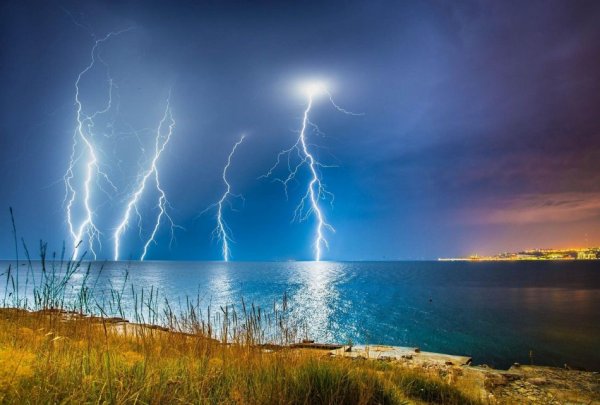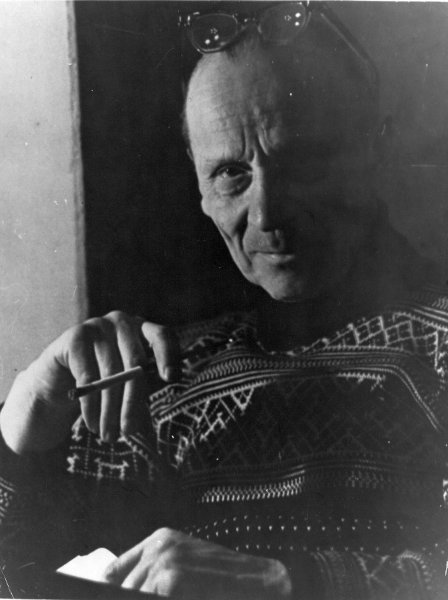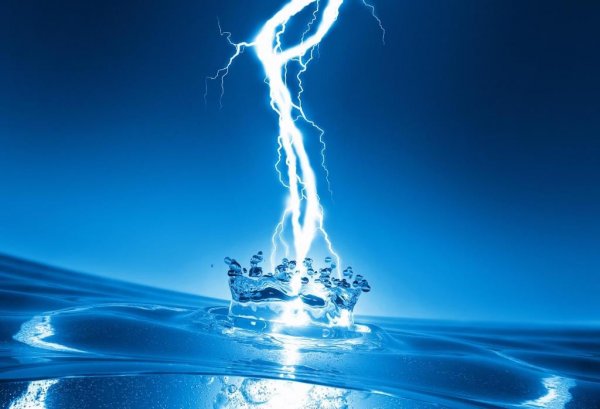Yutkin's electrohydraulic effect and its application
If a brick is thrown into a barrel of water, the barrel will survive. But if you shoot her with a gun, the water will instantly break the hoops. The fact is that liquids are practically incompressible.
The relatively slow falling brick allows the water to react in time: the liquid level will rise slightly. But when a fast bullet crashes into the water, the water does not have time to rise, as a result, the pressure rises sharply and the barrel falls apart.
Something similar will happen if you hit the barrel Lightning… Of course, this rarely happens. But here in the lake or the river, "hits" are more frequent.
Lev Alexandrovich Yutkin witnessed a similar event in his childhood. Either because at that age everything is perceived much brighter, or the picture was already very impressive, only the boy remembered for the rest of his life the dry crackle of an electric discharge and the high rise of water.
An accidental spy phenomenon of nature interests him for life.Later, he simulated an electric discharge in a liquid at home, established many of its regularities, called it the electrohydraulic effect, and figured out how to use "tamed lightning" for the benefit of people.
Lev Alexandrovich Yutkin (1911 — 1980)
In 1986, L.A. Yutkin's capital monograph "Electrohydraulic effect and its application in industry" was published posthumously. It reflects the work of a remarkable researcher and inventor who spent several decades studying the original method of converting electrical energy into mechanical energy.
The electrohydraulic effect occurs in a liquid when a pulsed electric discharge is excited in it and is characterized by high values of instantaneous currents, powers and pressures. In essence and by the nature of its manifestation, the electrohydropulse process is an electrical explosion capable of deforming various materials.
With the help of this effect, spark discharges occurring in an aqueous environment create extremely high hydraulic pressure, which is expressed in the instantaneous movement of the liquid and in the destruction of objects near the discharge zone, which do not even heat up.
Using it, they began to crush and grind a variety of materials, from brittle alloys such as carbide and waste paper to rock. So, to crush 1m3 of granite, about 0.05 kW·h of electricity must be consumed. This is much cheaper than conventional explosions using gunpowder, tallow, ammonite and other substances.
Then the electrohydraulic effect found application in underwater drilling operations: with its help, at a speed of 2-8 cm per minute, you can drill holes with a diameter of 50 to 100 mm in the thickness of granite, iron ore, in concrete mass.
As a result, it turned out that the electrohydraulic effect can be usefully mastered by many other professions: stamping and welding of metals, cleaning parts of scale and waste water from microbes, forming emulsions and squeezing gases dissolved in liquids from fluids, hardening of kidney stones and increasing soil fertility...
Of course, even today we do not know all the possibilities of this universal technology, which makes it possible to solve many energy and environmental problems.
You can download L.A. Yutkin's book "Electro-hydraulic effect and its application in industry" here: Book in PDF (5.1 MB)
The electrohydraulic effect (EGE) is a new industrial method of converting electrical energy into mechanical energy, which is carried out without the mediation of intermediate mechanical connections, with high efficiency. The essence of this method consists in the fact that when a specially formed pulsed electric (spark, brush and other forms) discharge is carried out in the volume of liquid in an open or closed vessel, ultra-high hydraulic pressures of its formation arise around the area, which are capable of perform useful mechanical work and are accompanied by a complex of physical and chemical phenomena.
— Yutkin L.A.
The physical essence of the electrohydraulic effect (EHE) lies in the fact that a powerful electric discharge in a liquid creates a very large hydraulic pressure, which is able to exert a significant force effect.
This happens in the following way. The high-density current causes a concentrated release of Joule heat, which provides strong heating of the resulting plasma.
The gas temperature, which is not compensated by the rapid heat removal, rises rapidly, leading to a rapid increase in pressure in the flow channel, which has a small cross-section in the initial time interval.
A cylindrical compression wave occurs in the liquid due to the rapid expansion of the vapor-gas cavity under the action of internal pressure.
The intensive release of energy in the channel can lead to the speed of its expansion exceeding the value corresponding to the speed of sound in the liquid, which leads to the transformation of the compression pulse into a shock wave.
The increase in volume of the cavity continues until the pressure in it becomes less than the pressure of the external environment, after which it collapses.




